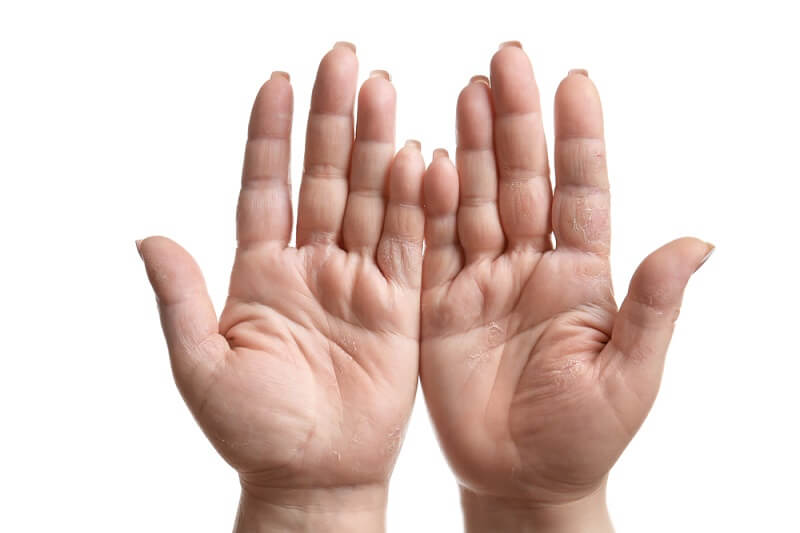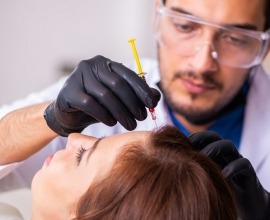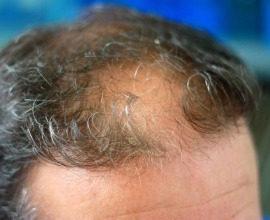Contact Dermatitis and Hair Loss
An itchy, inflamed scalp that you can’t stop scratching may be a nuisance in of itself but, if these symptoms persist and you find yourself shedding more hair than normal, this is a definite sign of contact dermatitis and a good cause for concern. After looking at an aggregate study of data from patients afflicted by contact scalp dermatitis, it appears that allergies to common ingredients and elements used in hair care are more prevalent than you might first think. So, if you find yourself visiting a clinician because you suspect an allergen might be contributing to your hair loss, request an allergen patch tests and ask if it will be possible to even test products brought from home that you specifically use as well.

Nickel
Nearly 24% of participants in this aggregate study showed an allergic response to nickel, which makes this element the top most prevalent allergen identified amongst those pulled from data. Other studies have also confirmed high numbers of reactions to nickel as well as uncovered the fact that 79% of children’s hair clasps had excessive rates of nickel release to the scalp every week. 20% of adult hair clasps were found with equally excessive release rates. Generally, common exposure to nickel occurs via:
-
Combs
-
Hair picks
-
Brushes
-
Rollers
-
Hair clasps
-
Metal hairpins
While this is an allergy that often affects women’s ability to wear lower-quality earrings and jewelry, it is important to remember that there are many other ways you might be exposed to nickel, particularly through hair care products.
Fragrance
The second most common allergen found within this aggregate study was fragrance. Nearly 33% of participants had positive reactions to either balsam of Peru (Myroxylon pereirae) or fragrance mixes, both of which are commonly utilized within shampoos, conditioners and styling products.
Balsam of Peru originates from a Central and South American tree called Myroxylon balsamum. The aromatic sap derived from the tree contains many potentially allergenic compounds, such as benzoic acid, benzyl acetate, benzyl benzoate and cinnamic acid. While obviously sweet-smelling and a natural component in widely-used fragrance mixes, this ingredient could be a source of irritation to your scalp that you might not realize. Here are ways most people get exposed to balsam of Peru:
-
Fragrances
-
Aromatherapy products
-
Scented oils and candles
-
Air fresheners
-
Deodorizers
-
Incense labeled as having cinnamon, vanilla or clove aroma
-
Unscented products that contain masking fragrance
Other allergens
In general, fragrance allergies affect at least 1% of the adult population and are the most common cosmetic allergen and the second most common allergen overall following metals. Here are some additional allergens to take note of while searching for causes of your hair loss or scalp irritation:
-
Corba, a rubber accelerator used to apply hair weaves and extensions
-
Propylene glycol, which is a humectant that retains moisture and detangles hair
-
Ammonium persulfate, an ingredient used in hair lightening products and bleaches
-
Preservatives such as methylchloroisothiazolinone or methylisothiazolinones (Kathon CG), methyldibromoglutaronitrile (MDBGN) and quaternium-15
-
Paraphenylenediamine, which is frequently used in permanent and henna hair dyes [1]
Our clinic has specialists in hair extraction and transplantation, plus we give expert guidance to maintain the health of your hair. With reasonable prices and quality care, we want to make sure that the hair we transfer lasts you a lifetime.
Sources:
[1] Aleid, Nouf M., et al. “Common Allergens Identified Based on Patch Test Results in Patients with Suspected Contact Dermatitis of the Scalp.” Skin Appendage Disorders, vol. 3, no. 1, 17 Dec. 2016, pp. 7–14., doi:10.1159/000453530.














